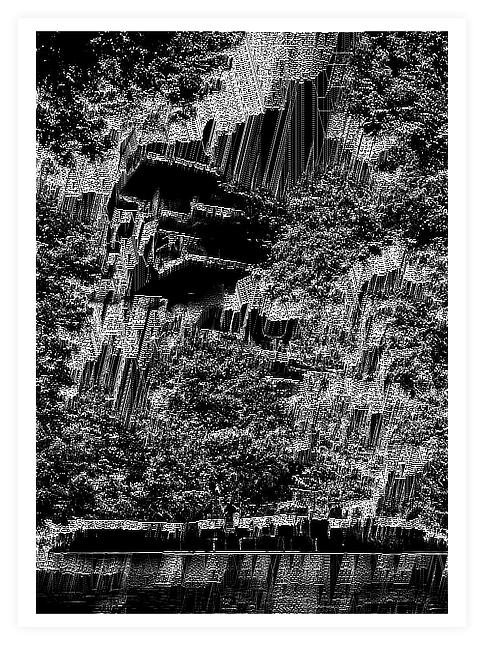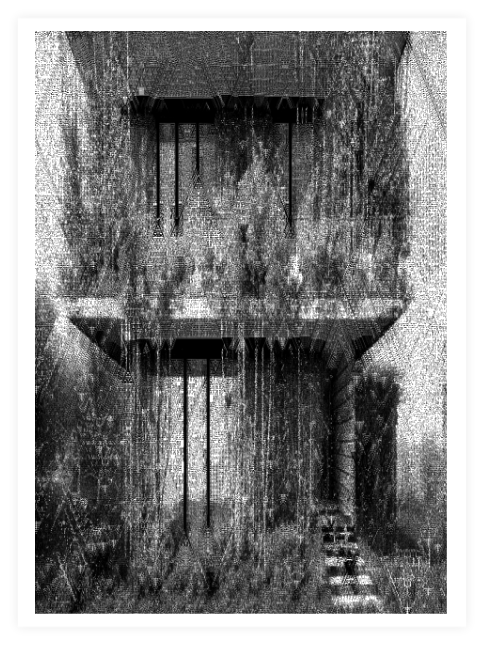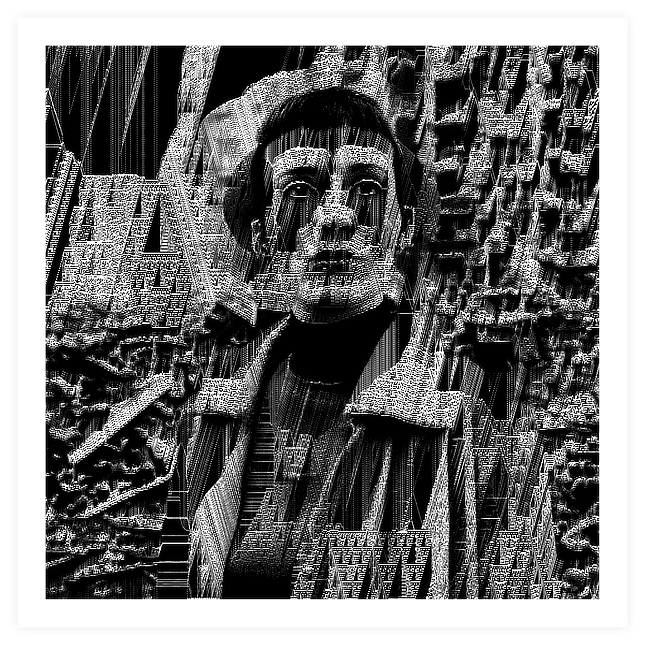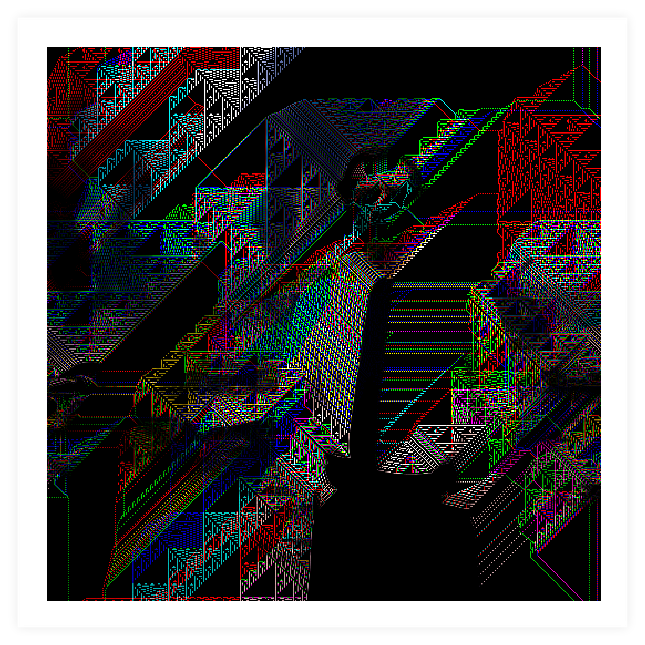LifeGraph
LifeGraph perceives each pixel of an photography as a living cell. By analyzing the nuances of colors, levels of transparency, and textures of each pixel, LifeGraph determines the different stages of evolution of these "cells" and identifies those that are "dead" or close to extinction.
LifeGraph perceives each pixel of a photograph as a living cell. By analyzing color nuances, transparency levels, and textures, the algorithm determines the various stages of evolution of these 'cells' and identifies those that are 'dead' or near extinction.
When it detects a pixel in agony or dead, LifeGraph generates a new element in its place, representing the starting point of a new generation, different from the previous one. This process triggers a sort of "viral propagation", which can sometimes eliminate younger entities as well as its own elements if the space to expand becomes necessary.
Thus, LifeGraph can fundamentally alter the 'genetic' structure of the image it uses as a field for implantation.
Operating as a pixel tracker, the viral propagation leaves visible traces of its passage. LifeGraph thus morphs into a graphic generator, giving birth to an unexpected universe.
We are facing here a typical case of emergence, where new laws and concepts spontaneously appear. Depending on the direction taken by LifeGraph, the image's source can reveal its original nature or be radically transformed.
In designing LifeGraph, I began to see photography as a sample of living matter, imbued with a "vital energy". This perspective encourages me to perceive each pixel not as a mere static element, but rather as a dynamic and complex entity. This approach initiates a new phase in my relationship with the image and photography, transforming them into modulable sources ripe for new creations.
----
LifeGraph
LifeGraph perçoit chaque pixel d'une photographie comme une cellule vivante. En analysant les nuances de couleurs, les niveaux de transparence et les textures, l'algorithme détermine les différents stades d'évolution de ces 'cellules' et identifie celles qui sont 'mortes' ou proches de l'extinction.
Lorsqu'il repère un pixel à l'agonie ou mort, LifeGraph génère un nouvel élément à sa place, représentant le point de départ d'une nouvelle génération, différente de la précédente. Ce processus engendre une sorte de "propagation virale", qui peut parfois éliminer des entités plus jeunes ainsi que ses propres éléments, si l'espace pour se développer devient nécessaire.
Ainsi, LifeGraph peut modifier de manière fondamentale la structure 'génétique' de l'image qu'il utilise comme terrain d'implantation.
Fonctionnant comme un traceur de pixels, la propagation virale laisse des traces visibles de son passage. LifeGraph se métamorphose ainsi en un générateur graphique, donnant naissance à un univers inattendu.
Nous sommes ici face à un cas typique d'émergence, où de nouvelles lois et concepts apparaissent spontanément. En fonction de la direction prise par le LifeGraph, la source de l'image peut révéler sa nature d'origine ou être radicalement transformée.
En concevant LifeGraph, j'ai commencé à voir la photographie comme un échantillon de matière vivante, empreinte d'une "énergie vitale". Cette perspective m'incite à percevoir chaque pixel non pas comme un simple élément statique, mais plutôt comme une entité dynamique et complexe. Cette approche initie une nouvelle phase dans ma relation avec l'image et la photographie, les transformant en sources modulables propices à de nouvelles créations.



